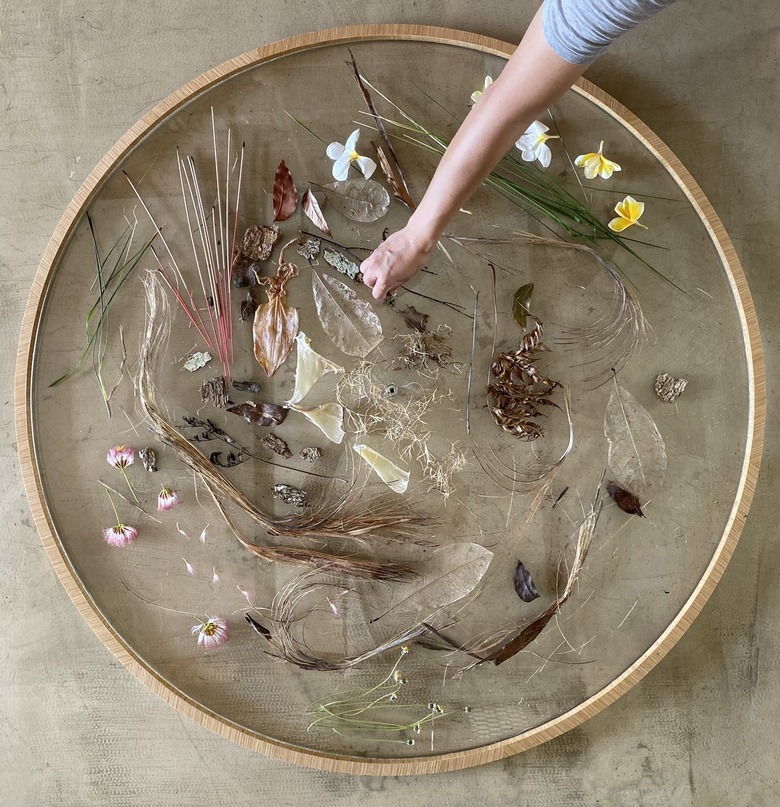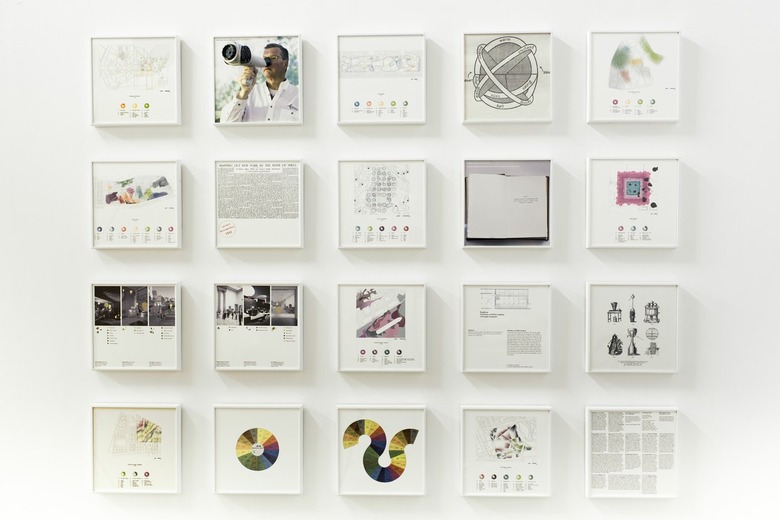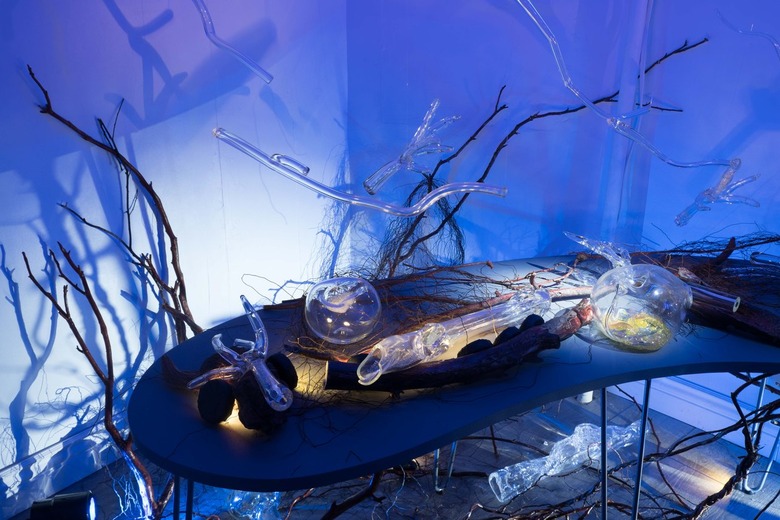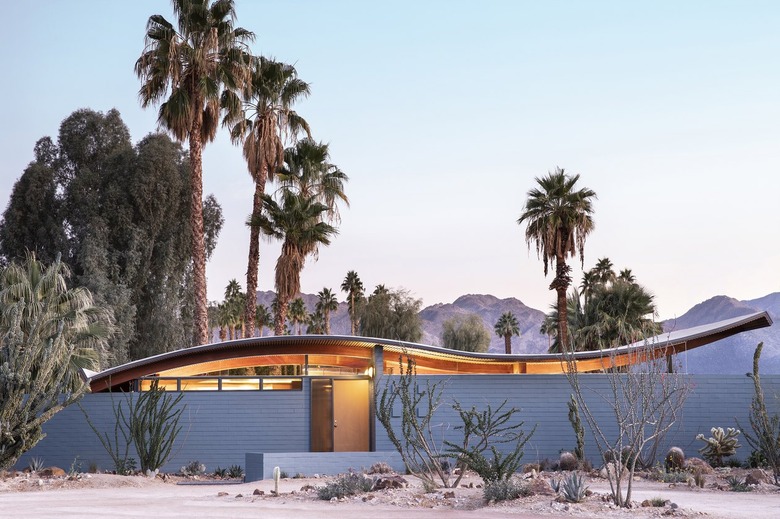Designing With Smell In Mind: Architecture's Neglected Sense
As a blind person, a new space first reveals itself to me through the nose: the smell of cedar chests in an apartment full of art and artifacts, the glorious smell of musty old books in a 19th-century library, the smell of fresh paint and recently sanded wood in a newly built home. Most people recognize how memory and semiconscious emotions are tied to our sense of smell, yet architecture has historically neglected the aesthetics of smell, leading to buildings that are visually appealing but olfactorily vacant (or apparently so).
In order to unravel centuries of ocularcentric architecture and suggest the possibility of more inclusive design that embraces sensorial differences and non-Western traditions, I turned to architects, designers, curators, and DeafBlind writer friends to help me explore what can happen when you design with smell in mind.
Christian Stayner is a Los Angeles-based architect who cares deeply about "expanding architectural experience beyond sight to consider other experiential design potentials," as he told me in an email. With his friend and design partner Jennifer Bonner and French perfumer Christophe Laudamiel (who has developed fragrances for labels such as Tom Ford, Ralph Lauren, and Tommy Hilfiger), Stayner created an "Olfactory Futures" scent installation at the Istanbul Museum of Art as part of the city's first Design Biennial in 2012.
They developed two "historical" scents having to do with the building's previous use as a maritime warehouse and its connection with the rose trade (as well as the global shift to synthesized florals). "They weren't about replicating actual smells as much as synthesized scents that sought to convey narratives or ideas," Stayner explained. The installation utilized the museum's HVAC (heating, ventilation, and air conditioning) system to diffuse smells that would alternate throughout the day.
This kind of scent project is not only innovative in a museum setting but also expands ideas of access and inclusion in new, exciting ways. For example, Stayner asks us to imagine how we could use smell in the realm of wayfinding: "Instead of (or in support of) signage, you could be led through a space by using smell — or humidity, or temperature for that matter."
If olfactory navigation seems fanciful, it's likely because you have not trained your nose. Although we learn to distinguish red from pink in school as small children, we do not learn to distinguish the smell of an orange from that of a grapefruit or mandarin. "There's rarely if ever any training around taste or smell despite those being incredibly powerful," notes Stayner. Part of this has to do with how easy it is to show children pictures of things, but it's relatively more difficult to give them scents to investigate.
These practical hurdles impeding our olfactory education are nothing compared to the deep-seated biases in Western culture and philosophy that insist that "sight is the noblest of the senses" (Descartes) and that "all smells are of a half-formed nature" (Plato). This kind of ocularcentrism makes life difficult for those of us who cannot see because it insists the only way to appreciate architecture (and most everything else) is through the eyes. Vision has been prioritized and olfaction denigrated for centuries, but there are hints that a smell renaissance is underway.
"This kind of ocularcentrism makes life difficult for those of us who cannot see because it insists the only way to appreciate architecture (and most everything else) is through the eyes."
Andreas Keller is the owner of Olfactory Art Keller, a gallery specializing in scent-based art in New York City, which he calls "an olfactocentric oasis in a visuocentric world." As a philosopher, he's "interested in the differences between seeing and smelling," and his gallery offers a unique opportunity for people to explore the differences. "I imagine people gallery-hopping and after looking at art in several galleries, being asked to smell art and then realizing how impoverished the world is if it's only seen," he revealed to me in an email.
Together with architect Jorge Otero-Pailos, Keller co-taught a course about scent and buildings for the Columbia University architecture department's preservation program. "It's absurd that preservationists fetishize visual appearance and entirely ignore olfactory appearance," Keller notes. "A reconstructed medieval castle that smells like the lemon cleaner used in the bathrooms fails at recreating the experience of being in that space. This is why we taught the students to critically think about and recreate the scents of buildings."
In his work to restore an experimental midcentury house called The Wave House (now The Desert Wave) in the Coachella Valley, which was originally designed by architect Walter S. White, Stayner and his collaborators sought to bring in nonvisual elements, which are completely ignored by federal guidelines for historic preservation. "Early on, the project involved an acoustic layer to the architecture," explains Stayner. "We wanted to bring a smell layer as well — old buildings have such specific smell patterns."
DeafBlind poet and essayist John Lee Clark, who lives in downtown St. Paul, Minnesota, told me in an email that he's found that the exterior of a landmark building may be left intact while the interior is wiped clean of its historic markers. This process "removes many kinds of smells that had once flowed out of the original materials, from their dynamic relationships with the environment and time, via entropy and accumulation of residues of life that had occurred there."
Clark also noted that the modern impulse to tear down walls to create larger, more open rooms changed the smell dynamics: "How smell worked in the original spaces was different. For example, a cloakroom, if used for its intended purpose, would have its smell, the combined smell of all those coats and hats." Much of today's architecture does away with the delightful "nooks and crannies" of older buildings that "acquired their different smells."
"It's absurd that preservationists fetishize visual appearance and entirely ignore olfactory appearance. A reconstructed medieval castle that smells like the lemon cleaner used in the bathrooms fails at recreating the experience of being in that space." — Keller
An olfactory aesthetic might urge the creation of intimate dwelling spaces that promote room-specific odors rather than expansive vistas. The "open-concept" layout seems to dominate the design of modern homes, but there were good reasons for closing kitchens off from the rest of the house.
Cristina Hartmann is a DeafBlind former lawyer and fiction writer based in Pittsburgh, Pennsylvania, who struggles with removing cooking smells from her "visually appealing" modern open layout, as she told me in an email: "If we cook, and we often do, the smell gets everywhere, and I mean everywhere. I spend a bit more time than I'd like to admit exorcising odors from a particularly pungent meal."
Outside her home, Hartmann finds that her sense of smell "serves practical and pleasurable purposes." She explains, "Smell really helps me with identifying certain spaces, such as a coffee shop or bakery. Of course, not all of the smells are pleasant, such as the one that all public bathrooms seem to have — that heavy smell of industrial soap and disinfectant. Still, it's useful when I'm searching for it!"
Attention to space-specific smells is a theme explored by Singapore-based Hyphen Architects, architect and designer Brian Khoo Zonghan, and project manager and curatorial assistant Mary Ann Ng, who collectively created "Ode to Smell" for the 2021 Venice Biennale of Architecture. The ongoing research project "examines the tumultuous relationship Singapore shares with its weather, in particular, how heat, rain, and humidity shape our environmental perception," according to the Singapore Pavilion website. The team "collected materials from eight locations across the island, extracting their scents through various mediums," which resulted in a "full-bodied and sensorial experience" that centered olfaction and emphasized "the scent memories we have of a space."
Although architecture has not traditionally taken it into consideration, smell influences our perception of a space. "The aromatic dimension of buildings is one that has been for the most part neglected in architectural theory, yet the effects created by odoriferous materials, ventilated scents, and other wafting perceptions can significantly influence one's experience of a structure," scholar, curator, and critic Jim Drobnick wrote in Volatile Effects: Olfactory Dimensions of Art and Architecture.
These "volatile effects" have been co-opted by commercialism since at least the early '90s, when neurologist Dr. Alan Hirsch demonstrated that pumping pleasant smells into casinos caused gamblers to stay longer and spend more. Besides casinos, hotel chains use signature scents to give their guests a sense of home no matter where you are in the world.
When my partner's father visited New York City last year, he insisted we take him to One World Trade. I felt like the exorbitant ticket price should not be wasted on me since the experience is all about the view, but he didn't want to go it alone. As soon as we entered the building, I noticed the scent. I couldn't place it, but I've since learned that it was a bespoke blend of wood and citrus that's pumped through the air vents.
"The scent was made to resemble something that does not exist at the top of one of the tallest buildings in the world: trees, all native to New York state, including beeches, mountain ashes, and red maples. It has some citrusy notes, for freshness. And it has a name: 'One World,'" according to The New York Times.
Authenticity is a loaded term, suggesting as it does that there is a single piece of history or nationality that can be isolated and evoked. Yet, this attempt to recreate the native trees of New York at the top of its highest building feels particularly misguided. Instead of diffusing a rather bland, if pleasant, scent throughout the building (that would have worked just as well for a hotel lobby), the designers could have considered placing scents to coordinate with the specific view — facing south to New York Harbor ought to smell different than facing Midtown.
The designers of the observatory might have looked to one of the exhibitions in the Pavilion of Taiwan at the 2021 Architecture Biennale for inspiration. Instead of diffusing scents throughout the entire exhibit, "Primitive Migration from/to Taiwan" combined audiovisual and olfaction designs in discreet spaces as "a proposition towards an imaginary future way of living at the intersection of urban civilization and nature," per e-flux, a critical discourse platform focusing on art, architecture, film, and theory.
Indeed, nature offers architecture ways of creating for all the senses. "To me," Stayner notes, "the real excitement of landscape versus architecture is that plants are soft and irregular and change over seasons and growth patterns, and have smells and sound, compared to buildings which tend to be devoid."
Designing spaces that are sensorially rich and dynamic offers architecture the potential to step beyond categories of disability and access to consider the variety of human senses in general. We can (and should) demand more from the built environment than eye candy. It's my belief that if we do, our senses and our expanding perceptions of sensory diversity will benefit everybody.



